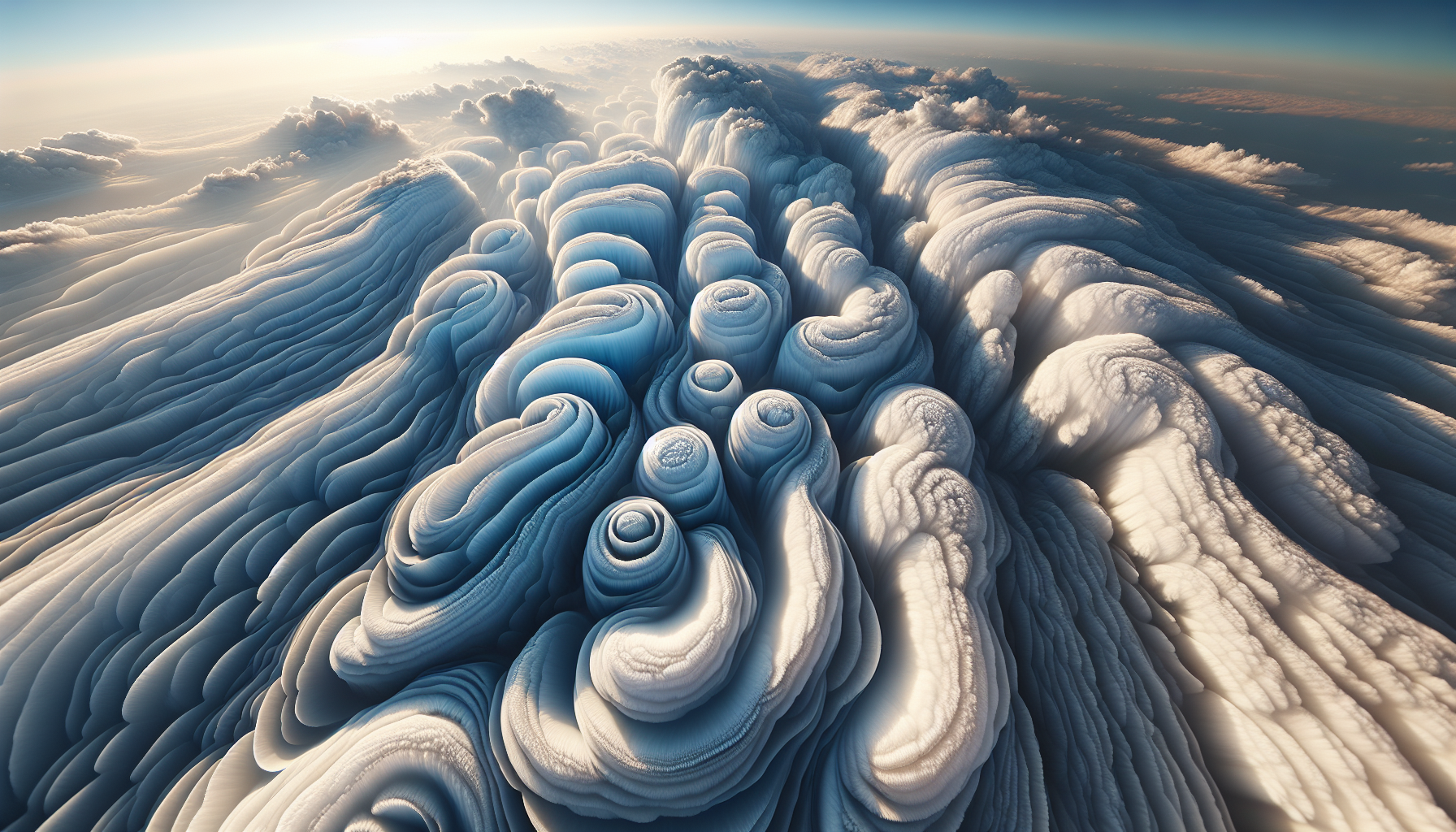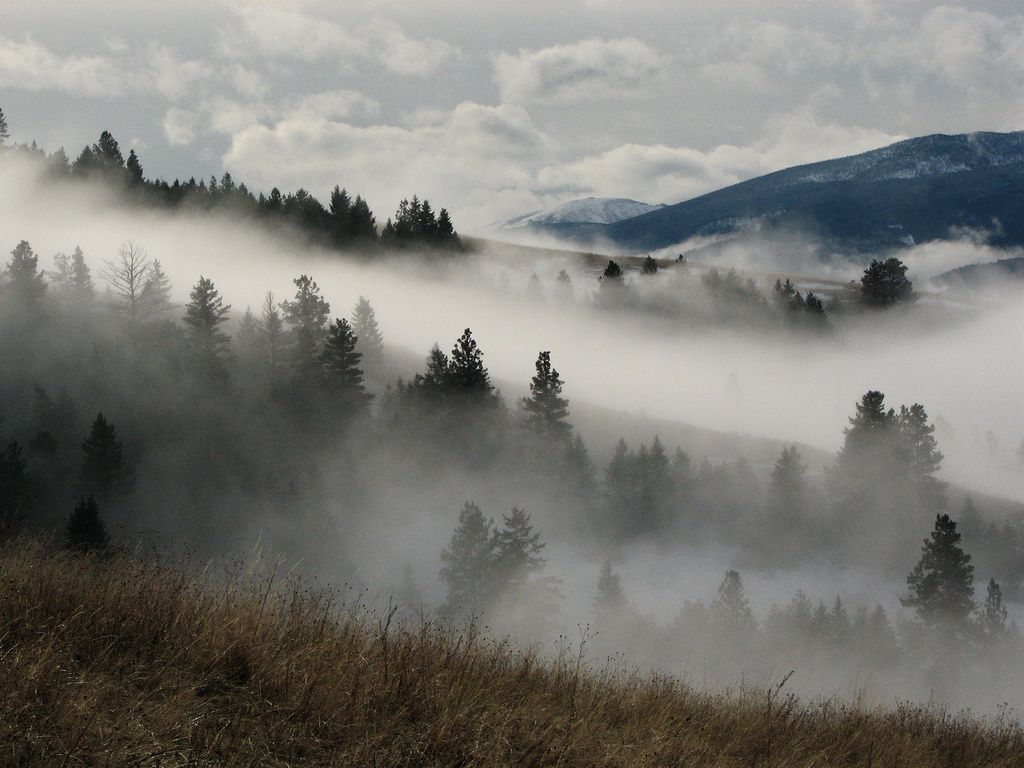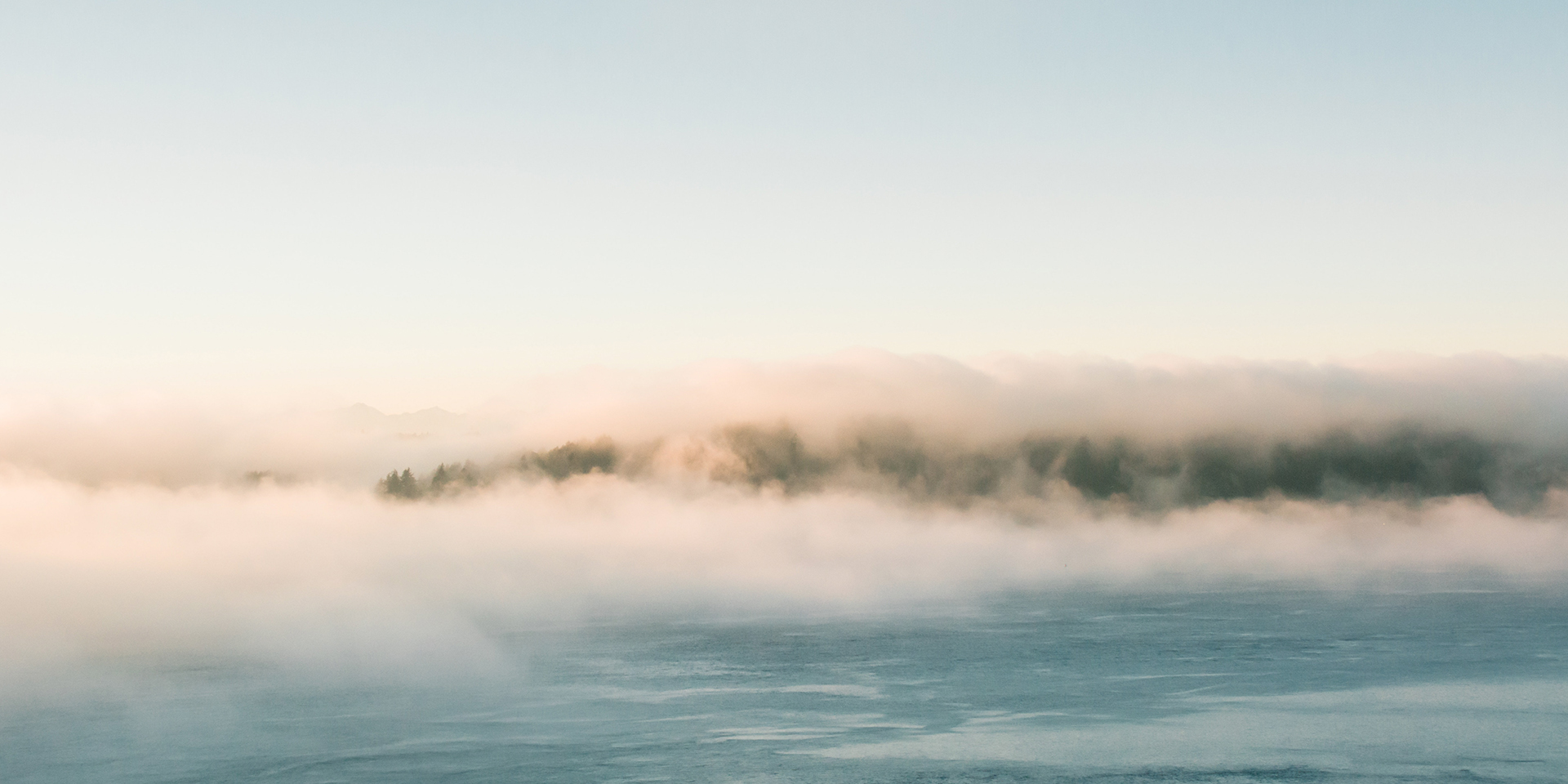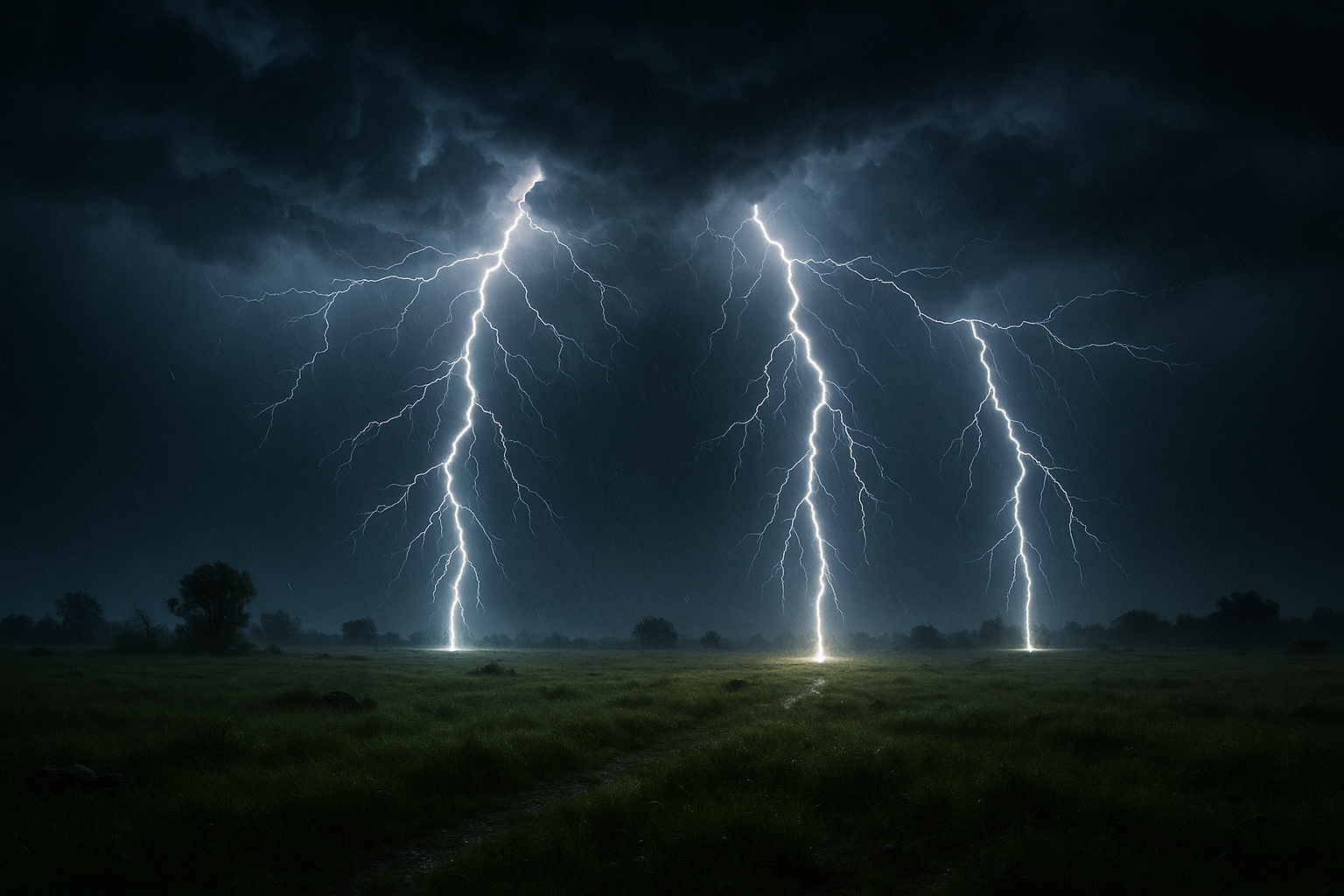In the vast theater of the sky, where nature orchestrates a daily display of wonder, few performances captivate the imagination quite like the mesmerizing dance of clouds. Among these ethereal formations, the Altocumulus Lenticularis stands out as a true spectacle—a cloud formation so striking and otherworldly that it often prompts a double-take from even the most casual sky gazer. As we embark on a journey to explore these fascinating clouds, we invite you to look beyond their beauty and delve into the intriguing science and artistry behind their formation.
Imagine stepping outside on a brisk morning, the air crisp with the promise of a new day. As you cast your eyes upward, you are greeted by a scene of surreal elegance: smooth, lens-shaped clouds suspended in the atmosphere, seemingly sculpted by the hands of a celestial artist. These are the Altocumulus Lenticularis, named for their characteristic lens-like appearance. Unlike the more common cloud formations that drift lazily across the sky, lenticular clouds often hover in place, defying the conventional notion of cloud behavior. It is this stationary presence, coupled with their unique shape, that captures the curiosity of meteorologists and nature enthusiasts alike.
The allure of Altocumulus Lenticularis is not just in their visual appeal but also in the story they tell about the atmospheric conditions that create them. Found typically in the lee of mountains, these clouds form when stable, moist air flows over a range of elevations. As the air ascends, it cools and condenses, crafting the signature lens shape that can range from a singular, isolated formation to a stack of multiple layers, each one delicately balancing atop the other. This phenomenon, known as orographic lift, is a testament to the complex and dynamic processes at play in our atmosphere, a reminder of the invisible forces that shape the visible world.
Yet, the magic of Altocumulus Lenticularis extends beyond their scientific explanation. Their presence in the sky has often been associated with folklore and myth, with some cultures seeing them as omens or signs from the divine. In modern times, their appearance has even been mistaken for unidentified flying objects, a testament to their enigmatic and otherworldly nature. As we journey through this exploration, we will uncover the cultural significance and historical anecdotes tied to these clouds, offering a window into how human perception of natural phenomena evolves over time.
In this comprehensive exploration of Altocumulus Lenticularis, we will delve into the science that explains their formation, the conditions necessary for their appearance, and the best locations and times to witness these spectacular displays. We will also feature stunning close-up photography that captures their intricate details, providing you with a front-row seat to nature’s grand performance. So, grab your camera, open your mind, and prepare to be enchanted by the captivating world of Altocumulus Lenticularis—a testament to the awe-inspiring beauty and complexity of our natural world. 🌥️
Understanding Altocumulus Lenticularis: A Meteorological Phenomenon
Altocumulus lenticularis, often referred to simply as lenticular clouds, are a fascinating meteorological phenomenon that captivates both casual sky-gazers and professional meteorologists alike. These unique cloud formations occur primarily in mountainous regions and are known for their distinctive lens-shaped appearance. Forming at altitudes ranging between 6,000 and 20,000 feet, lenticular clouds are stationary and appear to hover over a particular location, despite the winds aloft. Their formation is often linked to the presence of orographic lift, where stable moist air flows over a mountain range, causing the air to rise and cool, resulting in condensation and cloud formation.
The formation of lenticular clouds is a testament to the dynamic nature of our atmosphere. When moist air is forced to ascend over a topographic barrier, such as a mountain, it cools adiabatically, meaning without the loss or gain of heat. If the air cools to its dew point, the moisture in the air condenses, forming clouds. This process is further enhanced when the air descends and warms on the leeward side, preventing further cloud development beyond the peak of the mountain. This creates a stationary wave in the atmosphere, where the clouds are perpetually forming and dissipating in place, giving them their characteristic lens-like shape.
Beyond their scientific intrigue, lenticular clouds are also renowned for their striking beauty. Their smooth, flowing lines and vibrant colors, especially at sunrise or sunset, can turn the sky into a painter’s canvas. These clouds have often been mistaken for UFOs due to their unusual shape and are frequently a subject of photography and study. For adventurers and photographers alike, understanding when and where these clouds are likely to form can lead to spectacular photo opportunities. Various weather forecasting tools and apps now allow enthusiasts to predict the occurrence of lenticular clouds with increased accuracy, offering more chances to capture these ephemeral beauties in their full glory.
The Formation and Types of Lenticular Clouds
While altocumulus lenticularis is the most commonly recognized form of lenticular clouds, there are actually several types, each with its own unique characteristics. Understanding these variations can provide deeper insights into the atmospheric conditions required for their formation. The three main types are altocumulus lenticularis, stratocumulus lenticularis, and cirrocumulus lenticularis, each defined by their altitude and the specific atmospheric conditions in which they form.
Altocumulus lenticularis, as previously mentioned, forms at mid-altitudes and is the most common and easily identifiable form. These clouds are typically white with well-defined edges, but can take on a variety of hues depending on the time of day and the angle of sunlight. Stratocumulus lenticularis form at lower altitudes, usually under 6,000 feet, and are larger and thicker than their altocumulus counterparts. These clouds often have a more layered appearance and can cover a larger portion of the sky, creating a dramatic effect. Cirrocumulus lenticularis, on the other hand, form at higher altitudes, usually above 20,000 feet. They are less common and are often accompanied by ice crystals, giving them a wispy, ethereal appearance.
The formation of these clouds is influenced by several factors, including wind speed, temperature, and humidity levels. Strong, steady winds are crucial for the formation of the stationary waves required for lenticular clouds to develop. Additionally, the temperature gradient between the surface and the upper atmosphere plays a significant role in determining the altitude and type of cloud that forms. High humidity levels increase the likelihood of cloud formation, while low humidity can inhibit the process. Understanding these factors can help meteorologists predict the occurrence of lenticular clouds, providing valuable data for weather forecasts and aviation safety.
Comparison of Lenticular Cloud Types
| Type | Altitude | Characteristics | Common Locations |
|---|---|---|---|
| Altocumulus Lenticularis | 6,000 – 20,000 feet | Lens-shaped, vibrant colors | Mountainous regions |
| Stratocumulus Lenticularis | Below 6,000 feet | Layered, thicker | Hilly areas |
| Cirrocumulus Lenticularis | Above 20,000 feet | Wispy, ice crystals | High-altitude zones |
Photographing Lenticular Clouds: Tips and Techniques
Capturing the beauty of lenticular clouds requires a keen eye and a bit of preparation. Unlike traditional cloud photography, which often relies on capturing vast expanses of sky, lenticular cloud photography focuses on the intricate details and unique shapes of these fascinating formations. Understanding the best times and locations to photograph lenticular clouds can significantly enhance the quality of your images and provide a rewarding experience for photographers of all skill levels.
The best time to photograph lenticular clouds is during the golden hours, either shortly after sunrise or just before sunset. During these times, the sun’s angle creates dramatic lighting conditions that highlight the contours and colors of the clouds, adding depth and dimension to your photographs. Additionally, the natural light during these periods is softer and more diffused, reducing harsh shadows and creating a more balanced exposure. Keep an eye on weather forecasts and be prepared to head out when conditions are favorable for lenticular cloud formation.
Location is another critical factor in capturing stunning images of lenticular clouds. These clouds are most commonly found in mountainous regions, where orographic lift is prevalent. If you live near such an area, you’re in luck! However, if not, planning a trip to a nearby mountain range can be a great opportunity to explore and capture these unique clouds. Be sure to bring a sturdy tripod, as low-light conditions during the golden hours may require longer exposure times. Experiment with different lenses and settings to find the perfect balance between capturing the entire cloud formation and zooming in on the details.
- Research potential locations and weather conditions in advance.
- Use a tripod for stability during longer exposure times.
- Experiment with various lenses and settings to capture the best shot.
- Time your photoshoot for the golden hours to take advantage of natural lighting.
Video Resource: Lenticular Clouds in Action
To see altocumulus lenticularis in action, check out this informative video on YouTube. It provides a detailed look at how these clouds form and offers additional tips on how to capture them through photography. This visual guide is a great way to deepen your understanding and appreciation of these natural wonders.
Understanding Lenticular Clouds – Weather Channel
Watching the formation and evolution of lenticular clouds in real-time can be a mesmerizing experience. This video demonstrates the dynamic nature of these clouds and the atmospheric conditions that contribute to their formation. As you watch, consider the interplay of wind, temperature, and topography, and how these factors combine to create such stunning cloudscapes. Whether you’re a budding meteorologist or simply an enthusiast of natural beauty, this video is sure to provide valuable insights and inspiration.

Conclusion
Certainly! Here is a crafted conclusion for your article:
—
In conclusion, the exploration of Altocumulus Lenticularis clouds offers us a breathtaking glimpse into one of nature’s most captivating atmospheric phenomena. Throughout this article, we’ve delved into the unique characteristics of these lens-shaped clouds, their formation process, and the environmental conditions that give rise to such stunning displays in the sky. These clouds, often resembling UFOs or delicate layers of smooth, stacked plates, have long fascinated meteorologists, photographers, and nature enthusiasts alike.
The intricate dynamics of Altocumulus Lenticularis clouds reveal the complexity and beauty of our planet’s weather systems. Formed by the interaction of moist air and mountainous topography, these clouds highlight the interplay between Earth’s surface and the atmosphere above. This knowledge not only enhances our appreciation for natural beauty but also contributes to our understanding of meteorological patterns and climate change implications.
The significance of studying Altocumulus Lenticularis extends beyond mere aesthetics. As indicators of atmospheric stability and wind flow, these clouds can provide insights into local weather conditions, helping meteorologists to make more accurate forecasts. Moreover, for pilots, understanding the presence and implications of lenticular clouds is crucial, as they can indicate areas of turbulence.
Reflecting on the breathtaking visuals these clouds provide, one cannot help but feel a sense of wonder and appreciation for the natural world. The ability of such clouds to captivate and inspire highlights the intrinsic value of preserving our environment and the delicate balance within it.
I encourage you, dear reader, to take a moment next time you gaze upon the sky, to appreciate the ever-changing canvas of clouds. Whether you are a photographer seeking the perfect shot, a scientist intrigued by atmospheric phenomena, or simply a lover of nature, there is always something new to discover and learn from these ethereal formations.
Consider sharing this newfound knowledge and appreciation with others. Discuss the marvels of Altocumulus Lenticularis clouds with friends or family, share photographs that capture their beauty on social media, or simply take a moment to reflect on the extraordinary natural processes that surround us daily.
For those eager to learn more about these fascinating formations, I recommend exploring resources such as the American Meteorological Society and Weather Underground, where you can find additional information and stunning imagery that delves deeper into the wonders of atmospheric science.
Inspiring curiosity and fostering a deeper connection with nature, Altocumulus Lenticularis clouds remind us of the endless beauty and complexity of our world. As we continue to learn and explore, may we also strive to protect and cherish the environment that allows such wonders to exist. Let’s celebrate these spectacular clouds and the insights they provide, keeping our eyes to the sky and our hearts full of wonder. 🌥️
Thank you for joining us on this journey through the skies. We hope it has been as enlightening and inspiring for you as it has been for us. Feel free to leave a comment below with your thoughts or any personal experiences you have had with these captivating clouds. Share this article with others who might find it intriguing, and together, let’s marvel at the wonders of our natural world.
—
Please verify the links provided to ensure they are active and contain the relevant content, as these are suggested resources and may need updating based on current availability.
Toni Santos is a visual storyteller and artisan whose creations celebrate the poetry of the natural world. Through his thoughtful artistic lens, Toni captures the elegance of botanical forms, transforming them into meaningful expressions of symbolism, resilience, and timeless beauty.
His journey is deeply rooted in a passion for flora and the mysteries they carry. From the shape of a petal to the curve of a vine, each design Toni brings to life reflects a deeper narrative — one of growth, transformation, and harmony with nature. Whether crafting symbolic floral jewelry, enchanted botanical illustrations, or seasonal visual studies, Toni’s work evokes the quiet magic found in Earth’s most delicate details.
With a background in handcrafted artistry and visual design, Toni blends technique with intention. His creations do more than decorate — they speak, often inspired by ancient meanings behind flowers, the cycles of the seasons, and the invisible bonds between nature and spirit.
As the creative voice behind Vizovex, Toni shares this botanical journey with the world, offering curated stories, handcrafted collections, and thoughtful articles that help others reconnect with nature’s symbolism and artistic essence.
His work is a tribute to:
The quiet power of flowers and their messages
The art of visual symbolism in everyday life
The beauty of slowing down to see what’s hidden in plain sight
Whether you’re an artist, a nature lover, or someone drawn to the deeper meanings behind the natural world, Toni welcomes you to explore a space where aesthetics meet soul — one petal, one story, one creation at a time.





